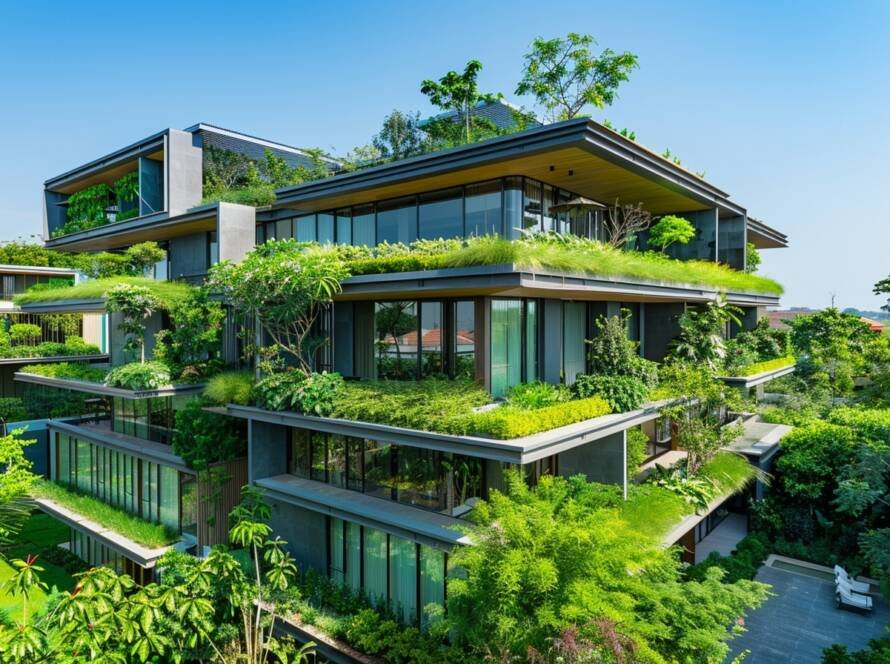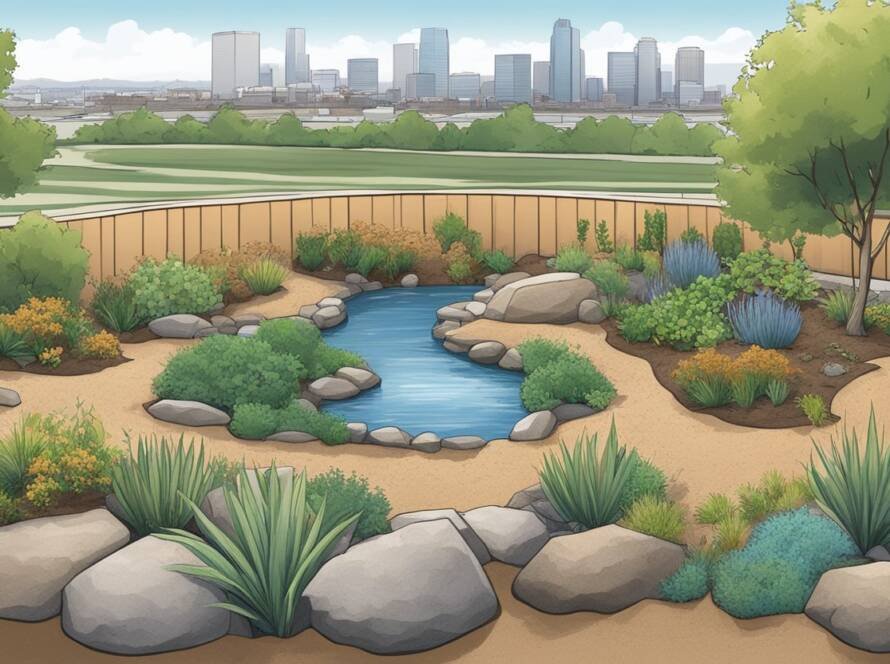Designing Serenity in Modern Spaces is about creating environments that evoke calm, relaxation, and a sense of well-being while integrating contemporary aesthetics and functionality. It’s a design approach that focuses on minimizing stress and distractions in a modern, often fast-paced world. Here’s a breakdown of how serenity can be infused into modern spaces:
1. Neutral Color Palettes:
- Description: Serenity begins with color. Soft, neutral tones like whites, beiges, soft greys, and earthy tones are often used to create a peaceful and calming atmosphere. These colors provide a subtle, unobtrusive backdrop that helps reduce visual clutter and creates a sense of tranquility.
- Key Features: Light tones on walls, soft natural hues for furniture and décor, and accents in calming shades like soft blues or greens to evoke a connection with nature.
2. Natural Light and Airflow:
- Description: The use of natural light is crucial in creating a serene space. Large windows, open layouts, and strategically placed glass doors allow sunlight to flood the space, enhancing mood and promoting a connection with the outdoors.
- Key Features: Floor-to-ceiling windows, skylights, and spaces that open onto outdoor areas or gardens. The design also emphasizes ventilation, providing fresh air circulation that promotes physical and mental well-being.
3. Minimalism and Decluttered Spaces:
- Description: A clutter-free environment is essential for achieving serenity. Modern serenity designs often lean into minimalist principles—using only the essentials, eliminating excess, and focusing on clean lines and functional design. This promotes a sense of openness and reduces mental distractions.
- Key Features: Simple furniture designs, hidden storage solutions, and the intentional use of space to create a sense of order and balance.
4. Natural Materials:
- Description: Integrating natural materials like wood, stone, and natural textiles into the design enhances a sense of connection with the earth, providing grounding and warmth to a space. These materials are not only aesthetically pleasing but can also promote a healthier, more sustainable environment.
- Key Features: Wooden floors, stone countertops, natural fiber rugs, linen or cotton textiles, and houseplants that introduce organic textures and colors into the design.
5. Soft Textures and Layers:
- Description: Soft textures play a major role in creating comfort and warmth in a serene space. Layering textiles—like plush cushions, throws, and rugs—can invite a tactile experience that makes a space feel cozy and welcoming.
- Key Features: Textured fabrics, plush seating, cozy blankets, and subtle details like knitted throws or wool rugs that add to the feeling of calm.
6. Indoor-Outdoor Flow:
- Description: Designing spaces that blur the lines between indoor and outdoor environments helps foster a sense of peace and harmony. By creating easy transitions between the two, you enhance the connection to nature, which has been shown to reduce stress and promote relaxation.
- Key Features: Sliding glass doors that open to gardens or patios, balconies with outdoor seating, and use of natural landscaping to create continuity between the interior and exterior.
7. Soothing Soundscapes:
- Description: A serene space isn’t just visually calm; it also engages the senses in subtle ways. Sound is an often-overlooked element. Incorporating soundproofing materials or introducing gentle sound elements—like water features or soft background music—can contribute to a calming atmosphere.
- Key Features: Quiet, insulated rooms, water fountains, or speakers playing soft ambient music or nature sounds to enhance relaxation.
8. Mindful Lighting:
- Description: Lighting plays a significant role in setting the mood of a space. For serenity, lighting should be soft, adjustable, and layered to create a gentle ambiance throughout the day and evening. Avoiding harsh, overly bright lighting helps maintain a calm atmosphere.
- Key Features: Dimmable lights, soft LED lighting, table lamps with warm-toned bulbs, and candles or lanterns to add warmth and intimacy to the space.
9. Personalized Comfort:
- Description: Designing serenity doesn’t mean sacrificing personal style or comfort. A serene space can still be highly functional and reflective of individual tastes. Incorporating elements that bring joy, such as favorite artwork, cozy seating, or a cherished heirloom, ensures the space feels both peaceful and personal.
- Key Features: Thoughtful placements of personal items like photographs, artwork, or sentimental objects, alongside comfortable, functional furniture.
10. Connection with Nature:
- Description: Bringing nature indoors is a key aspect of creating serenity. Incorporating plants or even elements like living green walls helps purify the air, introduce vibrant yet calming greenery, and foster a peaceful, nurturing environment.
- Key Features: Indoor plants, vertical gardens, natural stone elements, and water features that mimic the natural world.





1 Comment
A WordPress Commenter
Hi, this is a comment.
To get started with moderating, editing, and deleting comments, please visit the Comments screen in the dashboard.
Commenter avatars come from Gravatar.